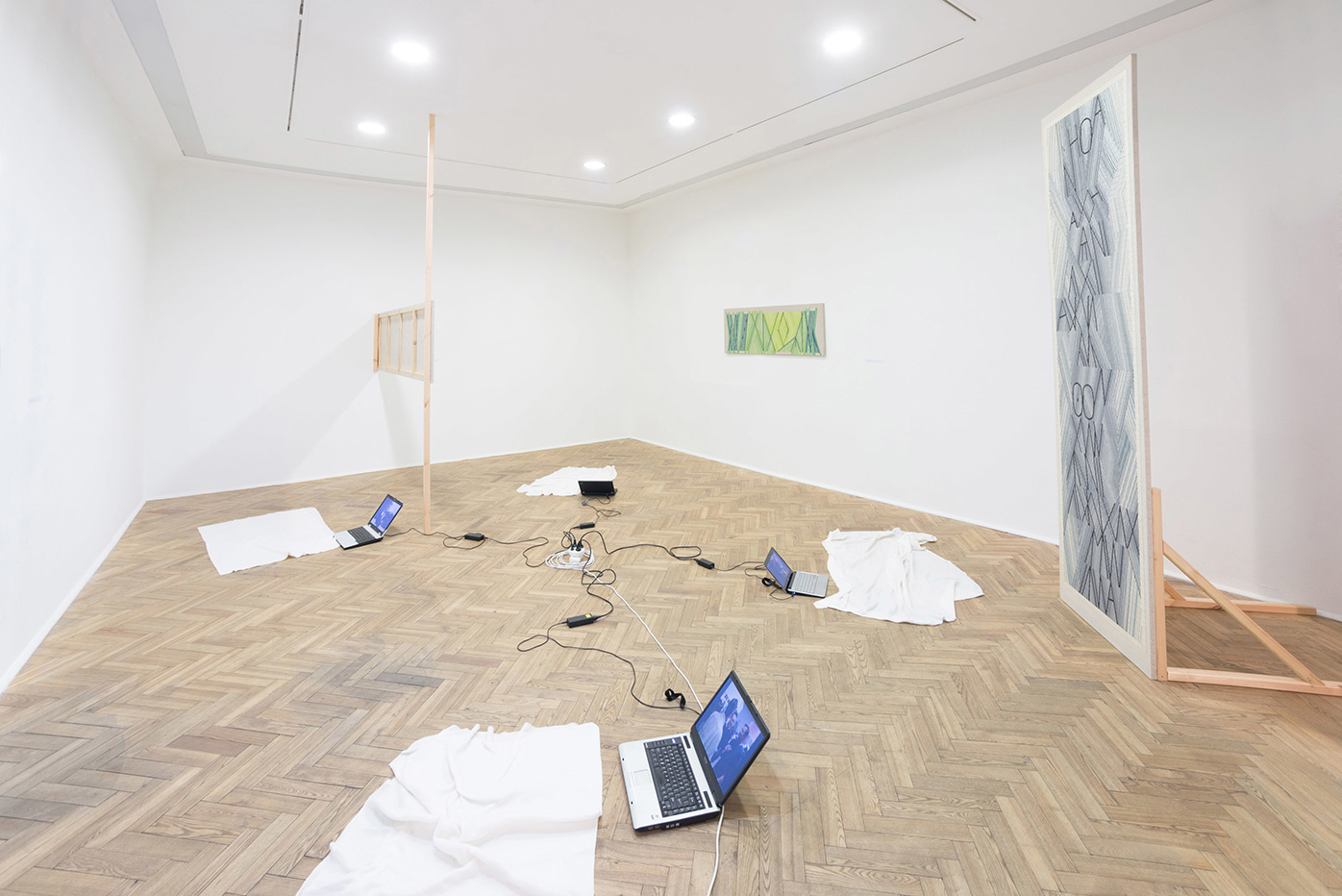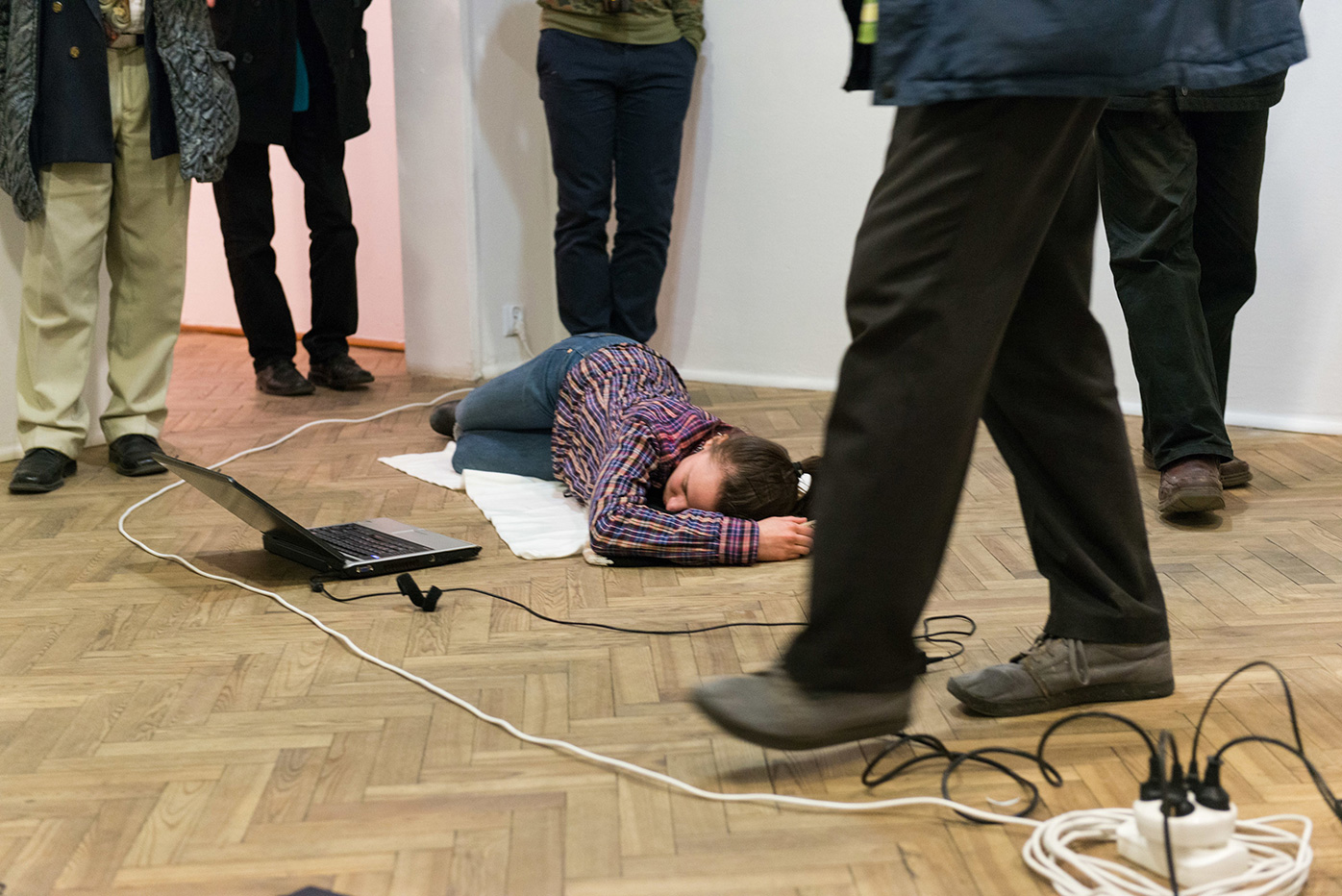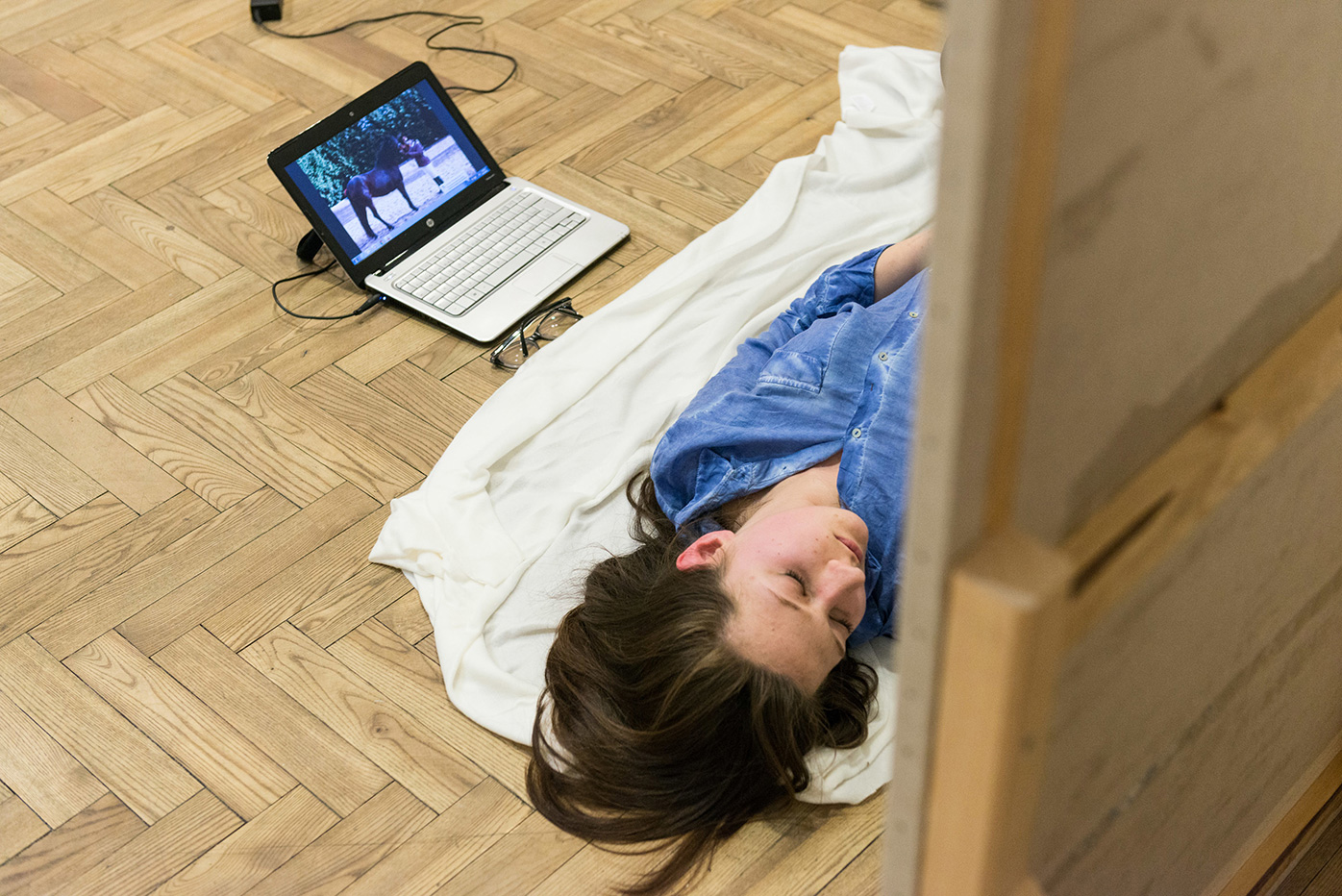Jabberwocky
an interpretation of two emancipatory strategies
2014
This exhibition comes in three parts - it is the meeting of two historically defined artistic strategies, and one contemporary, nascent strategy. All of them overlap, both in terms of installation and meaning; in addition, they all share the common theme of liberation, emancipation from industrial or post-industrial society through nonsensical action and the theme of sleep as a form of physical and spiritual repose.
The first strategy is represented by Bohdan Mrázek’s textile graphic series Jabberwocky. It is a precise illustration of the way textile artists endeavoured to use consistent artistic practice to break free of their dependence on industry during the period between 1950 and 1980. The name of the series is a reference to Lewis Carroll. In the Alice in Wonderland books, Jabberwocky is the title of a nonsense poem. This series of artworks is about a point in time at which the textile artist loses the reason behind his artistic practice. He no longer has the need to emancipate himself from industrial production. It has disappeared from his living space, having moved to China, or some country in southeast Asia. All that remains for the textile artist is a dream and an idea of his own production, unfettered by industrial manufacturing and consumerism.
The second part of the exhibition consists of people sleeping. They are not reposing in the name of the productivist avantgarde, but rather in the name of the performative art of the 1960s; specifically, art actions such as Milan Knížák’s Difficult Ceremony and Lying-Down Ceremony. Both pieces were concerned with collective slumber or sleep as one possible means of liberating oneself from a milieu with a high level of competitive behaviour. This is how Claire Bishop writes about Knížák’s performances in her work Artificial Hells. Primarily, however, their intention was to create a community where a simple, but functional emancipative technique is put into practice, which is supposed to protect us from the intrusions of civilisation.
In addition, the exhibition includes four computers. Photographs downloaded from the web are presented on their monitors. They all have four designations in common: IMG_4405, IMG_4426, IMG_4432 and IMG_4433. These were assigned to them by the machines that created them: Canon cameras. These technical images are imprisoned in a framework defined by software and hardware. Even so, they were created and recorded by the touch of a human hand, pressing down on the shutter release and a computer keyboard. In their immateriality and multiplicity, they become a spectre and a dream at the same time. Inadvertently, they call on us to seek new emancipative strategies – ones that will be functional in our post-industrial society. Meanwhile, the first two parts of the exhibition hint at possible starting points.
![]()
![]()
![]()
![]()
![]()
![]()
photo: Bartosz Górka






